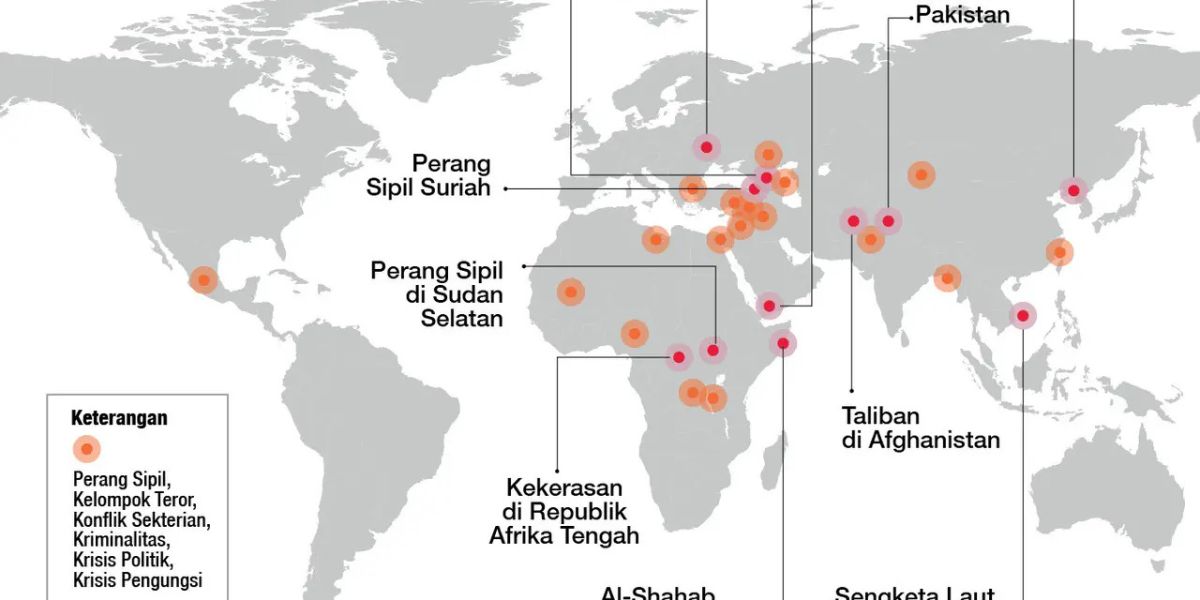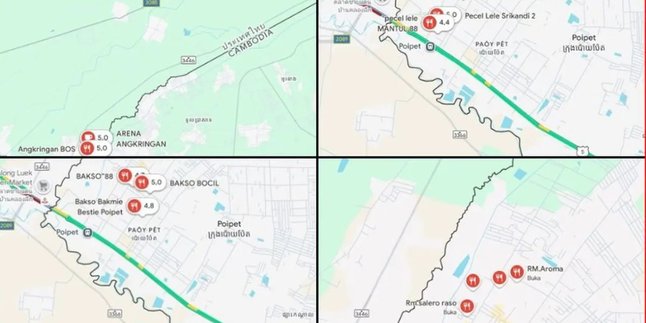Kapanlagi.com - The Russia-Ukraine war is now entering an increasingly worrying phase, sparking speculation that we may be on the brink of World War 3. With Ukraine now relying on long-range missiles made in the United States, the situation is becoming more heated and complex. Russia is not remaining silent; they are responding by issuing a new nuclear doctrine that has sparked debate on the global stage.
This tension is spreading, involving various major powers around the world. NATO, for example, is strengthening its position by conducting massive military exercises in the Arctic region. Meanwhile, countries in Latin America are calling for an end to the arms race to prevent a more dangerous escalation.
Now, the world's attention is focused on the strategic decisions made by each party, which could determine the direction of the global conflict moving forward. From Russia's updated nuclear doctrine to NATO's latest steps, let’s take a complete look at the dynamics currently unfolding, as discussed by Kapanlagi.com from various sources, Thursday (21/11).
1. Ukraine Uses ATACMS and Storm Shadow Missiles
The use of long-range missiles by Ukraine is now capturing the world's attention, especially after the shocking attack on Bryansk, Russia, last Tuesday, where ATACMS missiles were used for the first time with permission from the US.
Not only that, the Storm Shadow missiles supplied by the UK were also launched to destroy military bunkers and ammunition depots in Russian territory. According to anonymous sources from Financial Times, these missiles are considered vital strategic weapons to support Ukraine.
Circulating drone videos show a massive explosion in Russian-controlled areas, while pro-Russian military bloggers reported that 12 Storm Shadow missiles have rained down on the Kursk region, further strengthening Ukraine's position at the border.
2. Russia's New Nuclear Doctrine: What Has Changed?
In a move that has shaken the international stage, President Vladimir Putin has updated Russia's nuclear doctrine in response to increasingly intensifying threats.
This new doctrine explicitly states that Russia will not hesitate to use nuclear weapons if its sovereignty or that of its allies, such as Belarus, is threatened by conventional attacks.
The threats in question could include ballistic missile launches, attacks on vital military installations, or large-scale aggression against the homeland.
"We will not hesitate to use all necessary means to protect this country," asserted Putin while signing the important document.
By lowering the threshold for nuclear use, this move is clearly a strategic signal to NATO and the US, although observers warn that this policy could potentially increase the risk of direct confrontation that could reshape the geopolitical landscape of the world.
3. NATO Strengthens Military Exercises in the Arctic Region
Amid rising global tensions, NATO launched the largest military exercise in the Arctic region of Finland, involving 3,600 soldiers from various countries, including the United States, the United Kingdom, and France.
Colonel Janne Makitalo, the exercise director, emphasized that this activity aims to enhance interoperability among artillery units, rather than merely showcasing power.
"This is a statement that NATO is united and ready to protect its members," he said. However, Finnish observer Joel Linnainmaki views this exercise as a strong signal to Russia, considering Finland's position directly bordering the bear country, which further intensifies diplomatic pressure on the Kremlin.
4. International Response: Calls for Peace to New Warnings
Latin American countries, including Brazil and Mexico, united in a call to halt the arms race amid escalating global conflict tensions. They warned that the use of long-range missiles by Ukraine could worsen the situation and hinder efforts to achieve peaceful dialogue.
On the other hand, Chinese President Xi Jinping emphasized the importance of a 'new voice' for peace at the G20 summit in Brazil, calling for a political solution as a way out of the prolonged conflict.
"We must create a path for dialogue and diplomacy," he said, underscoring the urgency of international collaboration. Meanwhile, NATO remains on alert, focusing on intensive military training and preparations for any eventualities in Eastern Europe, adding layers of tension to the global stage.
5. Impact on Civilian Population and State Preparedness
Amid the tensions, Nordic citizens such as those in Sweden, Finland, and Norway are beginning to feel the urgency to prepare for potential crises. Local governments have issued appeals to the public to stockpile essential supplies as a mitigation measure.
"We ask citizens to remain calm yet vigilant. Prepare for all possibilities," stated an official announcement from the Finnish government.
Meanwhile, the US Embassy in Kyiv has also temporarily closed in response to the threat of air strikes, with White House spokesperson Matthew Miller emphasizing that this decision was made as a necessary precaution.
(kpl/rmt)
Disclaimer: This translation from Bahasa Indonesia to English has been generated by Artificial Intelligence.












